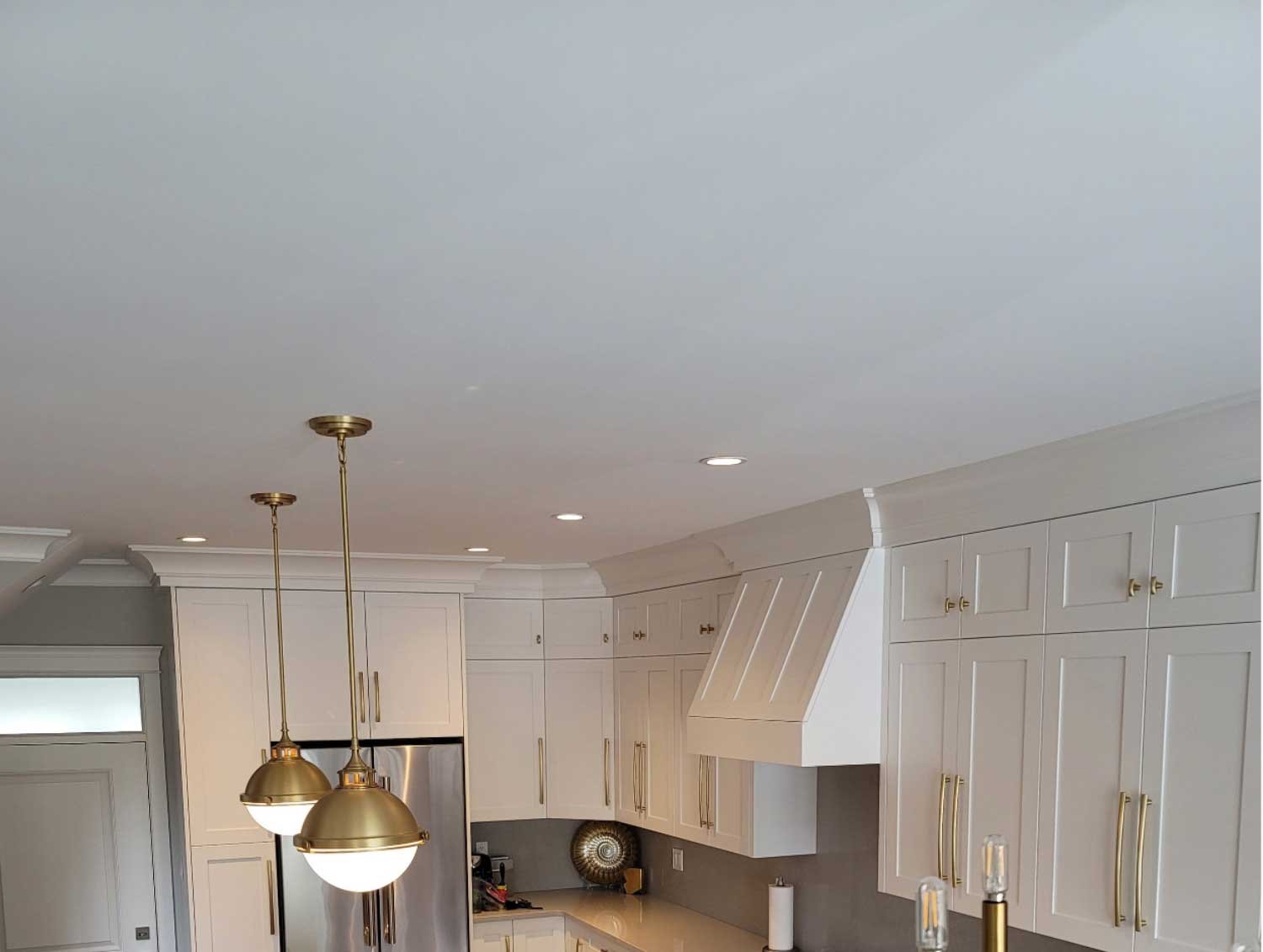
Home Renovation Blog
Home improvement | Kitchen renovation | Bathroom remodel | Outdoor transformation | General contracting
1364 Services
“Transforming Properties & People”
Declutter First, Renovate Smarter: Why We Partner with Cut the Clutter
Your Home, With Room to Grow
A renovation isn’t just about new tiles or fresh paint. It’s about how your home feels and how it supports your life.
Decluttering makes space for beauty.
Renovation brings beauty into the space.
Together, they create lasting change.
Smart Kitchen Appliances: A Modern Upgrade for Your Langley Home
If you haven’t thought too much about smart appliances, now might be a good time to start, especially if you’re looking ahead to ROI of your home.
-
November 2025
- Nov 6, 2025 Declutter First, Renovate Smarter: Why We Partner with Cut the Clutter Nov 6, 2025
- Nov 3, 2025 Smart Kitchen Appliances: A Modern Upgrade for Your Langley Home Nov 3, 2025
-
October 2025
- Oct 10, 2025 Winter Bathroom Renovation for Cozy Warmth: Heated Floors and Towel Warmers Oct 10, 2025
- Oct 1, 2025 7 Basement Renovations and How to Prepare Oct 1, 2025
-
September 2025
- Sep 10, 2025 Interior Design Colours for Fall 2025: Transform Your Space with the Latest Trends Sep 10, 2025
-
August 2025
- Aug 28, 2025 Easy Home Improvements for Thanksgiving Aug 28, 2025
- Aug 1, 2025 Summer Renovations: Smart Renovation Tips for Your Pool House Aug 1, 2025
-
July 2025
- Jul 24, 2025 Renovating While Vacationing: How to Schedule Summer Projects Around Travel Jul 24, 2025
- Jul 9, 2025 Renovate Your Cottage for Charm and Comfort: An 8-Step Guide Jul 9, 2025
-
June 2025
- Jun 2, 2025 Modern vs. Traditional Bathroom Design: Which One Fits Your Home Best? Jun 2, 2025
-
May 2025
- May 14, 2025 Upgrade Your Bathroom: The Magic of Voice-Controlled Smart Showers May 14, 2025
-
April 2025
- Apr 15, 2025 Bathroom Colour Guide: Choosing the Perfect Shades for Mood and Energy Apr 15, 2025
-
March 2025
- Mar 26, 2025 Maximizing Space and Efficiency: The Ultimate Guide to Small Kitchen Optimization Mar 26, 2025
- Mar 12, 2025 Cultural Influences on Kitchen Design: A Global Perspective Mar 12, 2025
-
February 2025
- Feb 17, 2025 Pre-Vacation Checklist: Ensuring a Worry-Free Getaway Feb 17, 2025
- Feb 3, 2025 Prepping for Power Outages: Your Essential Guide to Staying Safe Feb 3, 2025
-
January 2025
- Jan 15, 2025 5 Renovation Ideas for Empty-Nesters: Transform Your Home for the Next Chapter Jan 15, 2025
- Jan 6, 2025 Winter Home Maintenance Tips to Stay Cozy and Safe All Season Long Jan 6, 2025
-
December 2024
- Dec 16, 2024 Sustainable Holiday Decor: Eco-Friendly Ideas for the Season Dec 16, 2024
- Dec 4, 2024 Creative Holiday Decor Ideas to Highlight Your Home’s Best Features Dec 4, 2024
-
November 2024
- Nov 19, 2024 How to Choose the Perfect Backsplash for Your Kitchen Nov 19, 2024
- Nov 5, 2024 Surviving a Kitchen Reno: A Guide to Keeping Your Cool Nov 5, 2024
-
October 2024
- Oct 30, 2024 5 Common Mistakes When Planning a Kitchen Renovation Oct 30, 2024
- Oct 13, 2024 Fire Pits and Fireplaces Create the Perfect Outdoor Paradise Oct 13, 2024
-
September 2024
- Sep 21, 2024 Stylish Pathways and Walkways to Enhance Your Home's Curb Appeal Sep 21, 2024
-
August 2024
- Aug 18, 2024 Outdoor Renovations: Create a Private Retreat in Your Backyard Aug 18, 2024
- Aug 1, 2024 10 Genius DIY Storage Solutions to Maximize Your Home's Space Aug 1, 2024
-
July 2024
- Jul 4, 2024 5 Unique Canada-Inspired Tile Ideas to Transform Your Bathroom Jul 4, 2024
- Jul 3, 2024 How to Successfully Convert Your Basement Into an In-Law Suite Jul 3, 2024
-
June 2024
- Jun 13, 2024 How to Plan a Kitchen Remodel - A Step by Step Guide Jun 13, 2024
- Jun 3, 2024 Renovation vs. Repair: When to Take the Plunge Jun 3, 2024
-
May 2024
- May 16, 2024 Home Renovation Tax Credits Available to Consumers May 16, 2024
-
April 2024
- Apr 11, 2024 What To Do If You Have Water Damage in Your Home Apr 11, 2024
-
March 2024
- Mar 11, 2024 5 Ways to Create a Relaxing Spa Bathroom Experience at Home Mar 11, 2024
-
February 2024
- Feb 14, 2024 Masterful Mini Home Renovations - 5 Hacks You Can Do Right Now Feb 14, 2024
-
January 2024
- Jan 27, 2024 Considering a home renovation? Consider these flooring trends for 2024 Jan 27, 2024
- Jan 27, 2024 Investing in Beauty and Function: Bathroom Design Trends for 2024 Jan 27, 2024
-
December 2023
- Dec 4, 2023 The Art of Selling Your Home During the Holidays: Here’s How You Can Decorate Smart (And Sell) Dec 4, 2023
-
November 2023
- Nov 19, 2023 Kitchen Design Trends for 2024 - Elevate Your Home's Style and Value Nov 19, 2023
-
October 2023
- Oct 28, 2023 10 Shower Makeovers to Help Sell Your Home Quickly Oct 28, 2023
-
September 2023
- Sep 23, 2023 10 Questions to Ask a Prospective Home Renovations Contractor Sep 23, 2023
-
June 2023
- Jun 2, 2023 Should I hire a local renovation contractor or big box store for my home reno? Jun 2, 2023
-
May 2023
- May 23, 2023 Transform Your Backyard into a Stunning Oasis with These Outdoor Renovation Tips May 23, 2023
- May 9, 2023 Revamp Your Home for the Golden Years: Renovations for Seniors Aging in Place May 9, 2023
-
April 2023
- Apr 26, 2023 Boost Your Home's Value: These Renovations Will Give You the Best Bang for Your Buck Apr 26, 2023
- Apr 12, 2023 Small Bathroom Ideas to Add Space and Impact to Your Bathroom Apr 12, 2023
-
March 2023
- Mar 30, 2023 5 Creative Solutions for Surviving a Bathroom Renovation in a Single-Bathroom House Mar 30, 2023
- Mar 14, 2023 DIY Bathroom Remodel: Popular Bathroom Fixtures You Can Install Yourself Mar 14, 2023
- Mar 3, 2023 Smart Home Technology Can Save You Time and Money Mar 3, 2023
-
February 2023
- Feb 23, 2023 Summer Renovations: 5 Ways to Improve Your Home Before Summer 2023 Feb 23, 2023
- Feb 17, 2023 Five Ways to Make Your Home More Accessible for People with Disabilities Feb 17, 2023
- Feb 3, 2023 Work From Home Renovation: Maximize Your Space For Comfort And Work Feb 3, 2023
-
January 2023
- Jan 20, 2023 How to Create Efficient Kitchen Designs Perfect for Gourmet Chefs Jan 20, 2023
- Jan 6, 2023 Easy Step-By-Step Guide to Renovating Your Home in 2023 On A Budget Jan 6, 2023
-
December 2022
- Dec 23, 2022 The 7 Best Kitchen Countertop Materials for a Stunning Kitchen Remodel in 2023 Dec 23, 2022
- Dec 19, 2022 Luxurious Lighting Ideas for Any Room in Your Home Dec 19, 2022
- Dec 5, 2022 5 Undeniable Reasons to Renovate Your Bathroom Dec 5, 2022
-
November 2022
- Nov 24, 2022 Cut the Cost of Your Kitchen Remodel With These Pro Tips Nov 24, 2022
-
June 2021
- Jun 29, 2021 Our Top 5 BBQ Season Landscaping Projects Jun 29, 2021
- Jun 24, 2021 Prioritize your renovation to-do list with this step-by-step method Jun 24, 2021
-
April 2021
- Apr 11, 2021 Avoid shady general contractors with these 5 tips Apr 11, 2021
-
January 2021
- Jan 11, 2021 Our top 3 decluttering renovations Jan 11, 2021
-
December 2020
- Dec 21, 2020 How your 2021 renovations can facilitate your new year's resolutions Dec 21, 2020
- Dec 7, 2020 Buy and renovate or build new? Here's 6 factors to consider before you make the call. Dec 7, 2020
-
November 2020
- Nov 23, 2020 How to improve your ‘screen appeal’ in the new age of home buying Nov 23, 2020
- Nov 6, 2020 Five 2021 kitchen trends you didn't see coming Nov 6, 2020
-
October 2020
- Oct 23, 2020 Light up your space with a modern lighting upgrade Oct 23, 2020
-
September 2020
- Sep 27, 2020 Why fall 2020 is an ideal time to renovate Sep 27, 2020
- Sep 14, 2020 5 ways to go green on your next renovation Sep 14, 2020
-
August 2020
- Aug 27, 2020 Kids #WFH Tips: Create a space they'll use! Aug 27, 2020
- Aug 1, 2020 What you should know before renovating a secondary suite Aug 1, 2020
-
July 2020
- Jul 16, 2020 How to curate a work from home space that works for you Jul 16, 2020
- Jul 2, 2020 Why you shouldn’t wait until pre-sale to renovate Jul 2, 2020
-
June 2020
- Jun 26, 2020 3 ways to add personality to your home without losing value Jun 26, 2020















